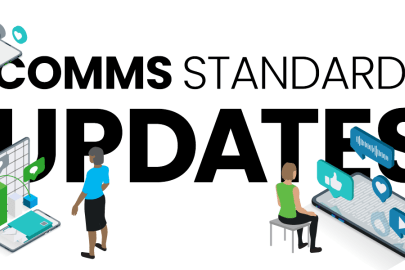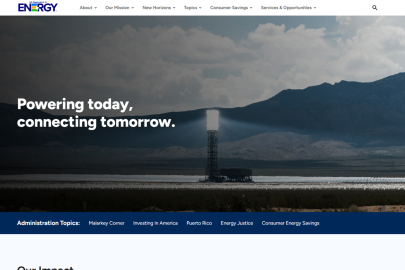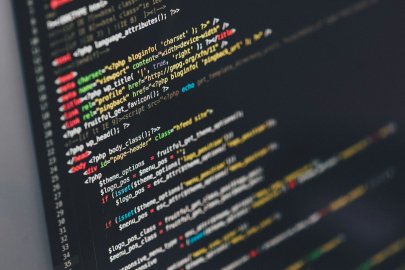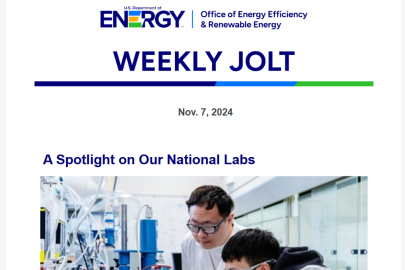Find out about the latest updates to web content maintenance standards, as well as the different types of content governance.
Communication Standards and Guidelines
June 21, 2024Welcome to Comms Standards Updates! Notifications of changes made to the U.S. Department of Energy's Office of Energy Efficiency and Renewable Energy's (EERE's) communications standards will be posted regularly, highlighting the latest updates to the EERE Communications Standards and Guidelines website and important pages to note.
Today, we’re reviewing the key things to know about web maintenance requirements and the different types of content governance settings available.
Web Maintenance
The two main types of web maintenance that should be conducted regularly on EERE websites are:
- Technical maintenance, which is the process of ensuring your website functions properly.
- Content maintenance, which is the process of making sure what’s on your website is up to date, compliant, and relevant for users.
Technical maintenance tasks include:
- Ensuring all website content is Section 508-compliant.
- Ensuring all webpages are responsive and mobile-friendly.
- Checking for unvisited pages and orphaned files.
- Reducing page weight to decrease load times, including resizing unnecessarily large files and removing unneeded scripts or interactive elements.
Content maintenance tasks include:
- Running link scans through SiteImprove or a similar tool to identify and update or remove broken links.
- Scanning content for misspellings via SiteImprove or a similar tool and correcting any errors.
- Identifying content that has not been updated for a year or longer and making necessary updates, if any should be made.
- Reviewing tags and metadata.
- Archiving old pages that are no longer needed and ensuring proper redirects are in place.
Content Governance
All pages on Energy.gov have a content governance setting. To help with managing content relevance, each page created within the Energy.gov content management system (CMS) is automatically given a content governance tag and expiration date, visible on the “View” tab in the CMS backend.
When a new webpage is created, the expected lifespan of the page must be determined so that one of these designations can be assigned. A standard lifespan for a web page is 3 years.
The three types of content within Energy.gov are:
- Statutorily Required, which is content that should be retained for legal or policy reasons, remaining live in the CMS for at least 3 years before being retired, such as budget documents.
- Temporary, which is content that does not need to remain on the site indefinitely and will be unpublished once it passes the expiration date that is set for it upon creation (less than 1 year from the publish date), such as events.
- Evergreen with Periodic Updates, which is content that should be retained indefinitely but needs to be maintained, such as program or research pages, and news articles.
Ensuring pages have proper content governance settings is an important part of your content inventory process. Review the content governance settings for pages and articles on your site, as well as any autogenerated content governance reports.
You can change the governance setting at any point. If a page is approaching its expiration date and you would like to keep it from being archived, update the expiration date for your page.
Questions?
If you have any questions or suggestions related to communications standards, please email the EERE Comms Standards Team.
Up Next
Our next Communications Standards and Guidelines highlight will look at events and exhibits.
Sign up to receive these updates by email:
Get the latest updates and highlights about EERE communications standards and guidelines.
Communication Standards Updates
-
 Learn about new guidance around financial assistance awards, particularly notices of funding opportunities (NOFOs).
Learn about new guidance around financial assistance awards, particularly notices of funding opportunities (NOFOs). -
 EERE maintains standards for any publications produced by the office or its tech offices.
EERE maintains standards for any publications produced by the office or its tech offices. -
 Learn about the standards for translated content in DOE and EERE communications.
Learn about the standards for translated content in DOE and EERE communications. -
 Information on updates to EERE's Web Governance Team (WGT) and Product Governance Team (PGT).
Information on updates to EERE's Web Governance Team (WGT) and Product Governance Team (PGT). -
 Learn about standards and resources provided for EERE awardees to help them build awareness of their work.
Learn about standards and resources provided for EERE awardees to help them build awareness of their work. -
 Learn more about the best practices and guidelines to improve search engine optimization in EERE web content.
Learn more about the best practices and guidelines to improve search engine optimization in EERE web content. -
 Find out about the latest updates to web content maintenance standards, as well as the different types of content governance.
Find out about the latest updates to web content maintenance standards, as well as the different types of content governance. -
 EERE has several guidelines and best practices related to email marketing and distribution lists.
EERE has several guidelines and best practices related to email marketing and distribution lists. -
 Learn about the latest updates to EERE's Style Guide!
Learn about the latest updates to EERE's Style Guide! -
 Updates to EERE's social media policies and strategy.
Updates to EERE's social media policies and strategy.

